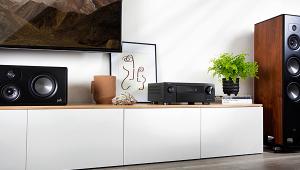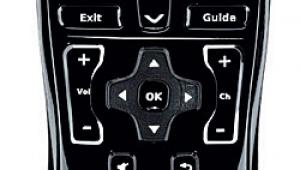PMI CinePanel Acoustic-Treatment Kit Page 2

Associate editor Geoffrey
Morrison and I sat down to test the system using a bevy of our favorite demo selections, both with and without the CinePanel system. With the panels in place, soundstaging and image precision, or the impression that musical events are occurring in the space between the front speakers, were both substantially improved. For example, the various orchestral instruments on the Film Music of Jerry Goldsmith SACD came through much more clearly. With the panels, the trumpets came from a specific point between the center and right speakers; without them, the horn section was more of an amorphous blur. The piano, which sounded like it was coming from outside of the left speaker in the acoustically treated room, sounded more closed-in without the acoustic treatment. Removing the panels also seemed to eliminate the perception of depth between instruments.
Our sound system's overall tone also seemed more open and neutral with the CinePanel units in place. Without them, the system sounded like your voice does when you cup your hands over your mouth. Geoffrey and I agreed that the frequency response was also more ragged when we removed the panels. Some frequencies, particularly the high ones, were just more pronounced. Without the panels, the bullets that reflect off of metal objects in Saving Private Ryan's opening scene were ear-piercing.
The CinePanels affect soundtrack reproduction in other ways, as well. For example, dialogue was much more difficult to understand. Without the acoustic treatment, words just seemed to slur together. Surround effects were equally affected. Our surround system utilizes monopole speakers at the sides and dipoles in the back. When we removed the panels, surround effects were significantly less focused, and not in a good way.
 At prices starting around $2,700, PMI's CinePanel kits may not be cheap; but, before now, you had to spend tens of thousands of dollars to get a similarly designed system. Besides, the difference in sound quality with the CinePanel kit is at least as noticeable as what you'd get if you upgraded any other component in your system. The best part is, the treatment will help you build a solid foundation for any sound system you put in the room. It will make the system you have now sound better and will help make the most out of whatever system you buy tomorrow. PMI's CinePanel kit is probably one of a select few products that I can recommend without hesitation to anyone who's looking to upgrade their home theater system. If it tells you anything, we bought the kit that we reviewed.
At prices starting around $2,700, PMI's CinePanel kits may not be cheap; but, before now, you had to spend tens of thousands of dollars to get a similarly designed system. Besides, the difference in sound quality with the CinePanel kit is at least as noticeable as what you'd get if you upgraded any other component in your system. The best part is, the treatment will help you build a solid foundation for any sound system you put in the room. It will make the system you have now sound better and will help make the most out of whatever system you buy tomorrow. PMI's CinePanel kit is probably one of a select few products that I can recommend without hesitation to anyone who's looking to upgrade their home theater system. If it tells you anything, we bought the kit that we reviewed.
Highlights
• Well-engineered to function over a broad frequency range
• Significantly improves any system's sound quality

- Log in or register to post comments






























































